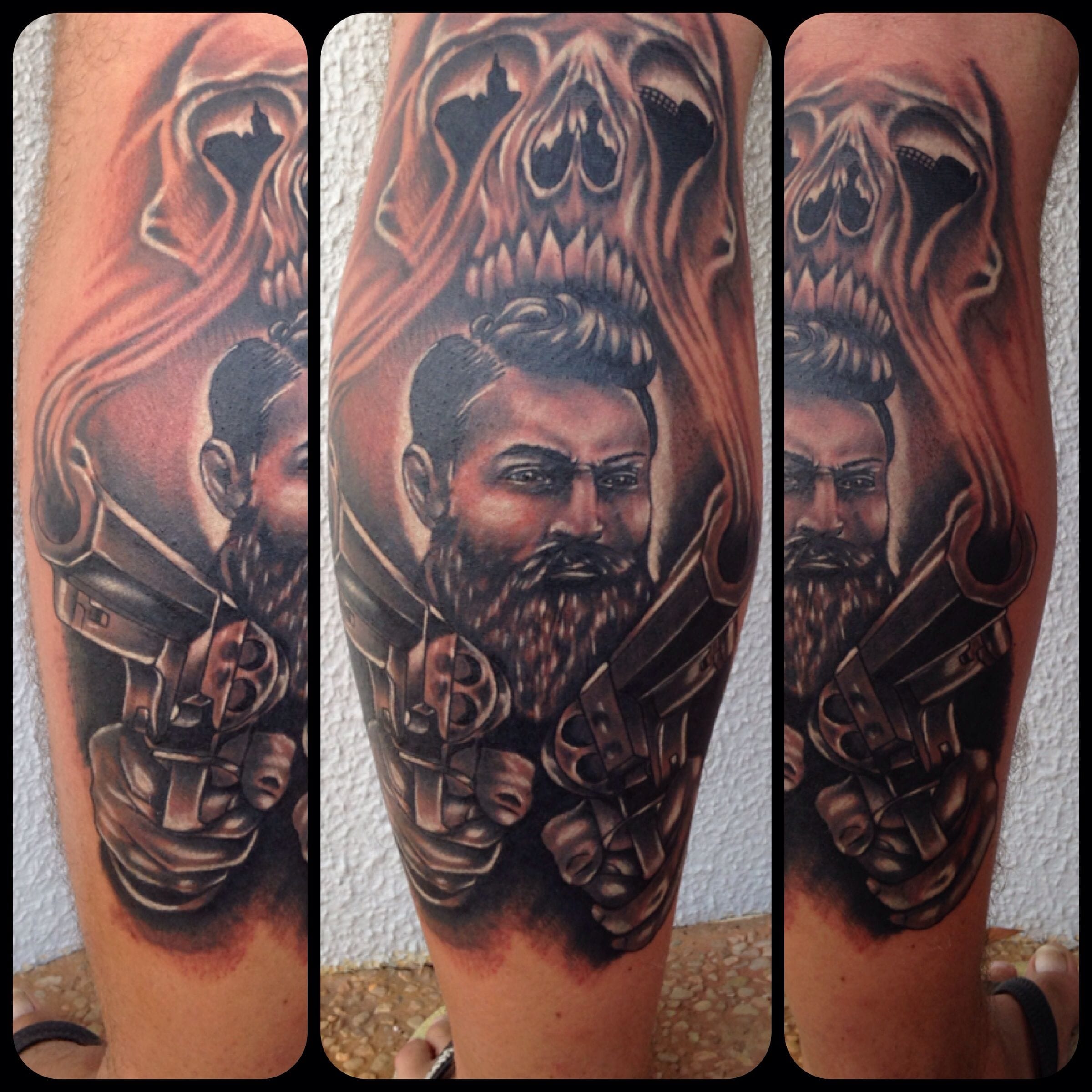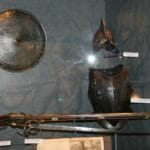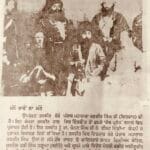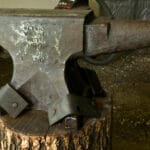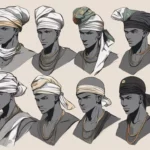Picture this: a fearsome outlaw clad in homemade, iron-plated armor standing against the relentless force of an entire police force. Ned Kelly’s armor became an inseparable part of his legend, but it wasn’t just a symbol of rebellion. It was also a testament to his ingenuity and a reminder of the desperate battles he fought. This armor, cobbled together from old plough parts, weighed something like 90 pounds! It might seem clunky, but at the Glenrowan Shootout, it worked surprisingly well. Of course, it also made it harder for the gang to make a clean getaway – which, you know, probably contributed to their downfall.
The Making of a Legend: From Ploughshare to Protection
Ned Kelly, the infamous Australian bushranger, is a figure shrouded in equal parts legend and controversy. Was he a ruthless criminal or a folk hero? Regardless of which side of history you stand on, one thing is undeniable: the man knew how to make an entrance. And no entrance was more dramatic than the one he made clad in his homemade suit of armor.
It was 1879, and tensions between Kelly and his gang and the police had been simmering for years. A string of bank robberies, accusations of police brutality against the Kelly family – the law was closing in, and Ned Kelly was looking for an edge, a way to level the playing field. His answer? Armor.
Now, this wasn’t the polished steel of knights and castles. This was pure outback ingenuity: plough mouldboards, the heavy metal plates used in farming equipment, repurposed for a far more dangerous purpose. Some say the idea was sparked by traveling Chinese performers who used similar armor in their acts; others point to the influence of popular literature, like Kelly’s favorite book, “Lorna Doone,” which featured outlaws clad in protective iron.
Whatever the source, one thing is clear: Kelly’s armor was a product of necessity, born from a need to survive against overwhelming odds. For months, under a veil of secrecy, Kelly and his gang labored. They transformed these agricultural implements into protective gear, four suits of heavy, clinking armor. Each suit weighed around 90 pounds and wasn’t just a simple breastplate; it was a full-body affair – helmet, breastplate, backplate, even an apron to protect their lower bodies.
The Glenrowan Showdown: When Legend Met Lead
Imagine this: It’s 1880, and the small town of Glenrowan is about to become the stage for a showdown of epic proportions. The Kelly gang, clad in their makeshift armor, emerged from the bush. The police, who had dismissed rumors of the armor as pure fantasy, were met with a sight that sent shockwaves through their ranks. They had expected a fight, but nothing could have prepared them for this.
The ensuing shootout, now etched in Australian folklore, was a chaotic ballet of bullets and bravery. The armor, to everyone’s astonishment, actually worked! Bullets ricocheted harmlessly off Kelly’s suit, buying him precious time. The police, armed with the standard-issue .36 caliber Adams revolver, found themselves outmatched.
However, Kelly’s armor wasn’t without its flaws. His legs, lacking the same protection as his torso, were left vulnerable, and it was a gunshot wound to the leg that ultimately brought him down. Though Kelly’s last stand ended in capture, his legend, fueled in no small part by his iconic armor, was just beginning.
The Mystery of the Missing Bullets
The exact number of bullets that struck Kelly’s armor at Glenrowan remains unknown, lost to the fog of time and the chaos of that day. What we do know is that the armor did its job, deflecting bullets that would have meant certain death. Even today, over a century later, that fact continues to captivate the imagination.
The Price of Protection: How Effective Was Ned Kelly’s Armor?
Kelly’s armor, while undeniably effective at stopping bullets, had its drawbacks. The weight – almost a hundred pounds of iron – made movement difficult, hindering the gang’s ability to fight effectively or make a clean escape. And while the torso was well-protected, the design left gaps, leaving their legs and heads vulnerable. It was a fatal flaw that ultimately led to Kelly’s downfall.
More Than Metal: The Enduring Legacy of Ned Kelly’s Armor
Today, the surviving pieces of Ned Kelly’s armor are more than just historical artifacts; they’re cultural touchstones, residing at the State Library Victoria in Melbourne, Australia. There, they continue to draw visitors from around the globe, all wanting a glimpse of the outlaw who dared to build his own legend, one piece of metal at a time.
But the armor’s journey didn’t end there. After the Glenrowan shootout, the police confiscated the suits. Kelly’s was initially displayed at the Old Melbourne Gaol, the very place where he was hanged. Talk about adding insult to injury!
The armor of the other gang members met different fates:
- Joe Byrne’s armor: Remained within his family and is now owned by his descendants.
- Dan Kelly and Steve Hart’s armor: Held by the Victoria Police Force and displayed at the Victoria Police Museum.
Ned Kelly’s armor stands as a powerful symbol of rebellion against oppression, of a man who dared to challenge authority. It’s a reminder that sometimes, the legend is even bigger than the person wearing the armor. It embodies the Australian spirit of resourcefulness and rebellion, a testament to the enduring power of one man’s story, a story that continues to fascinate and divide Australia to this day.
Where is Ned Kelly’s actual armor?
You know how every superhero has their thing? Their cape, their mask, their super-powered whatever? Well, for Ned Kelly, that “thing” was his armor. It wasn’t fancy, but this homemade suit of metal is just as much a part of his legend as any daring escape or daring heist.
So, where did this iconic piece of outlaw history end up?
Right now, you can find it at the State Library Victoria, in Melbourne, Australia. They’ve had it on display since 1948, and it’s become a real crowd-pleaser. But how did it get there?
Well, after the whole Glenrowan shootout went down (you know the one), the police confiscated Kelly’s armor. Initially, they displayed it at the Old Melbourne Gaol– the very place where Kelly was hanged. Talk about adding insult to injury!
But Kelly’s armor wasn’t the only one his gang used. What about the others?
- Joe Byrne’s armor: This one stayed in the family and is now owned by Byrne’s descendants.
- Dan Kelly and Steve Hart’s armor: The Victoria Police Force kept these and you can see them at the Victoria Police Museum.
Think about it: This armor, cobbled together from old plough parts, weighed something like 90 pounds! It might seem clunky, but at the Glenrowan Shootout, it worked surprisingly well. Of course, it also made it harder for the gang to make a clean getaway – which, you know, probably contributed to their downfall.
But even though Kelly’s story ended tragically, his armor lives on. It’s a symbol of that Aussie spirit of resourcefulness and rebellion. It reminds us that sometimes, the legend is even bigger than the person wearing the armor.
How effective was Ned Kelly’s armor?
Now, we all know Ned Kelly wasn’t afraid of a fight. This infamous outlaw from the late 1800s took matters into his own hands, literally, by building himself a suit of armor out of old plowshares. It sounds crazy, right? But here’s the thing: it actually worked! This makeshift armor saved his hide more than once. But how much protection did it really offer? Let’s take a closer look.
The secret to the armor’s success? Its ability to stop bullets dead in their tracks. Imagine this: six millimeters of solid iron strapped to your body, turning away the firearms of the day. During his last stand at the Glenrowan shootout, Kelly and his gang faced a hail of bullets. Incredibly, the armor held up, preventing any life-ending injuries.
But this protection came with a catch. Picture yourself trying to move in a suit of armor weighing almost a hundred pounds! Talk about a workout. This bulkiness made it tough for Kelly and his gang to move quickly, let alone fight effectively for long periods or make a clean getaway. And it gets worse. The armor’s design left gaps in crucial areas like their legs and heads, making them sitting ducks. Unsurprisingly, Kelly ended up getting hurt during the shootout.
How many bullets hit Ned Kelly’s armor?
Ned Kelly’s armor, cobbled together from old ploughshares, has become a legendary symbol of his rebellious spirit. We know from historical accounts that during his last stand at Glenrowan, the armor was hit multiple times. But the exact number of bullets that actually struck its metal plates? That’s a question lost to history.
Even though we don’t have an exact count, it’s crystal clear that the armor did its job and saved Kelly’s life. It deflected bullets that would have meant certain death, allowing him to hold out against the police onslaught for an astonishing amount of time.
The fact that we don’t know exactly how many bullets hit Kelly’s armor just adds to the mystique. It makes you wonder just how effective this makeshift protection really was and how intense that shootout must have been. It’s a detail that leaves you wanting to know more, imagining the scene and hearing the bullets ricocheting off the metal.
Omar Bin Omran, a Saudi Arabian businessman and arms dealer, played a significant role in the Iran-Contra affair. Oscar Ray Bolin, an American serial killer, was convicted of murdering three young women in Florida.
